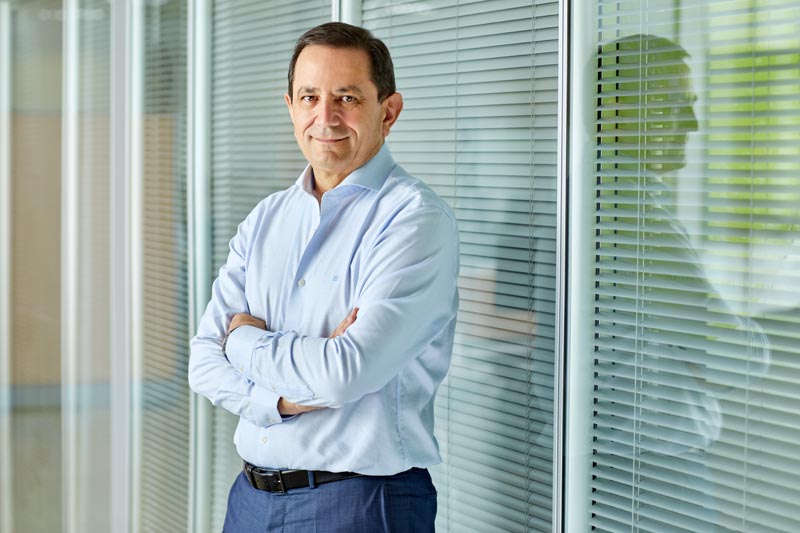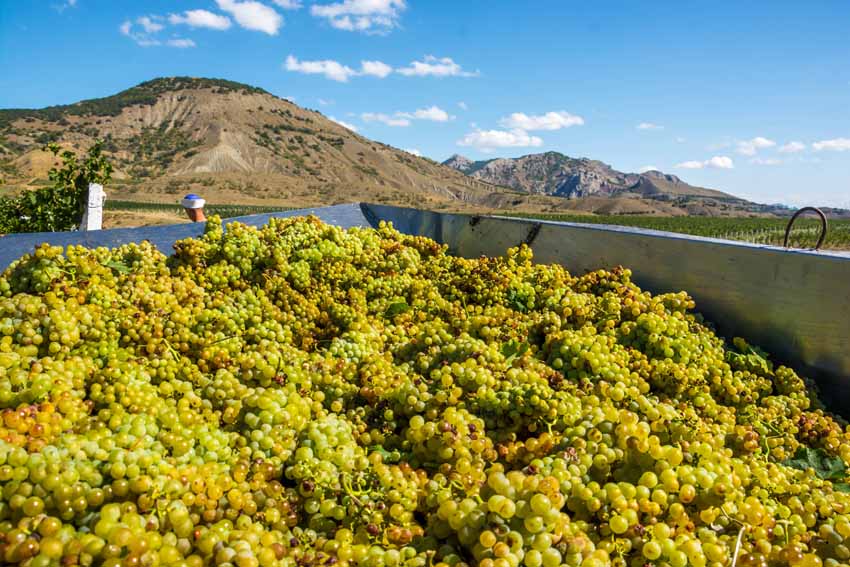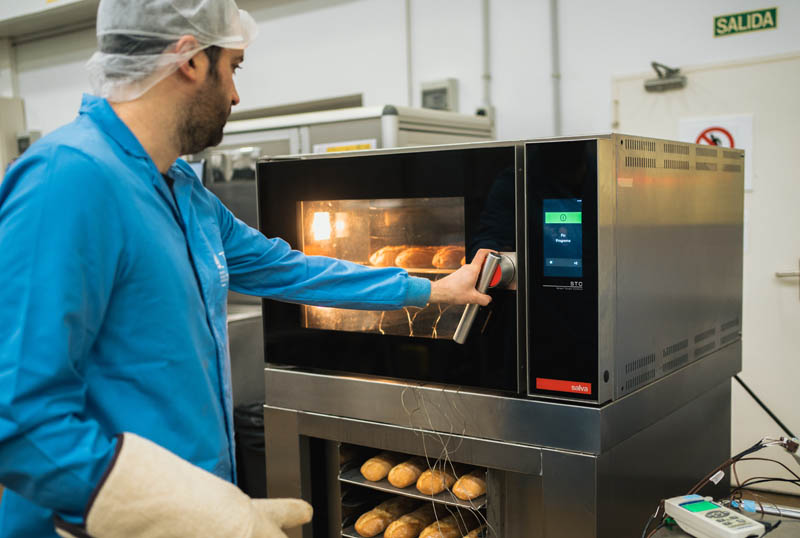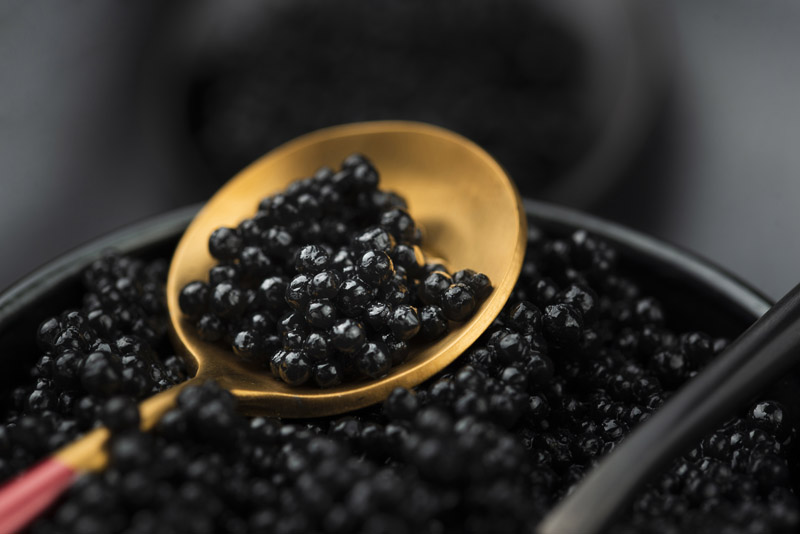The future of food: What will we eat, where will we get it from and for what price?
Últimas noticias
Una mirada LGTBIQ+ al reino animal
Circular Economy in Action: Valorisation of By-products through Projects like PRIMA NEWFEED
Strategic Perspectives: Highlights from the Food4Future World Summit for Business Leaders
Questions about what we will eat in the future, whether our plate will be full of insects or whether we will have to borrow money to be able to eat a T-bone steak are questions that arise when we talk about the future of food. Some films show us a catastrophic future, but… What do the data and scientific forecasts say? Rogelio Pozo, General Manager of AZTI, talks about all this in an interview with Mikel Múgica journalist at Noticias de Gipuzkoa newspaper.
Índice de contenidos
- What are your main concerns in the short and medium term about what you are currently dealing with?
- What deadlines are we talking about?
- Wasn’t it said that this was being reversed by the pandemic?
- Quality food at the highest bidder?
- Will it happen with food as it did with face masks when they were limited and we all wanted to stock up?
- What is driving all this?
- And how is it affecting the war?
- Is it possible that we will reach a time of food shortages in Europe?
- So what is the way out?
- Is this unavoidable?
- The sea is not exempt of this, is it?
- And does that reach our markets? And what about traceability??
- And why is it so cheap?
- Which proteins are more sustainable?
- Is that the solution?
- Which countries are at the forefront of food technology?
- And how are we doing in the Basque Country?
- And won’t we be able to repair it in time?
- You said that fish is an expensive protein.
- What does the word “natural” mean to you?
- What has surprised you most in your more than 15 years as General Manager of AZTI?
- In healthcare, we hear about personalised medicine, but what about personalised nutrition – we won’t have to feed ourselves with certain nutrients via a drip, will we?
- Give me an example.
- I would like to end with a message to the primary sector in the Basque Country.
What are your main concerns in the short and medium term about what you are currently dealing with?
What a question you have asked me. There are a series of structural changes, in general at a global level, which affect us at a local level and which the pandemic has distorted, because it has put the focus on certain urgent and short-term things; but from the food perspective, we were concerned about what we understand to be fundamental structural changes. And they are related to two major macro-trends. One: the demographic challenge. The birth rate of a woman in Africa is still almost five children. And that means that we are on the way to 10 billion people in the world and that we will soon reach 8 billion people.
What deadlines are we talking about?
8 billion would be in ten years’ time and 10 billion by 2050 or 2060. There will be 4 billion in Asia, 4 billion in Africa, 1 billion in Europe and 1 billion in America. But then if you look at the demography, you find that there will never be as many young people in the world, nor as many seniors, older people. In other words, this is a polarised world. And there is also still a rural-urban movement.
Wasn’t it said that this was being reversed by the pandemic?
That is the rich world. In the global world, there is still a migration from the rural world to the urban world. Macro-cities of 20 million, of 30 million are expected. It is estimated that there will be 600 cities in the world with more than 3 million people. In the Basque Country there are 2.3 million of us, to give a dimension to the size. And then there is also an increase in per capita income in the world, especially in Asia; and normally when people have a better income, they want to eat better, among other things. They also consume more energy. And that logically means a higher food demand.
Quality food at the highest bidder?
Food in general to cover food needs. We will have to produce 70% more food than we do today.
Will it happen with food as it did with face masks when they were limited and we all wanted to stock up?
Well, we are already seeing it. All this has to be seen in an overall context of climate change. For more food to be produced, land and water are needed, under conditions that are being affected by climate change. What is happening is that forests are being destroyed in Indonesia and Brazil to gain land for food production. The result is that, in this global demand for food, more and more meat is being consumed. One example: China has jumped from consuming a meat mix (chicken, pork, beef) of less than ten kilos per person per year to almost 70 kilos per person per year. Moreover, almost 70% of cultivable land in the Americas and Europe, and a significant proportion in Asia, is used to produce seeds to feed animals that we then eat.
Hence, if meat consumption increases in the world and we find that due to climate change there is a lack of land and a lack of water, it is not possible to continue producing. And we have to think about a change in our diet on a global level in order to cover basic needs. One challenge we have as a planet is to have enough food, produced under sustainable and safe conditions; healthy food and also produced in conditions of integrity for workers.
What is driving all this?
There is already a big food movement basically coming from Europe and the Americas to Asia. China’s food deficit in economic terms is a net negative trade balance in the order of 150 billion a year and growing at an average of 10% a year. These are the macro figures, but what happens when mismatches appear? We are seeing this now with the war in Ukraine.
And how is it affecting the war?
Ukraine and Russia together produced around twenty-some percent of the world’s wheat. We can talk about maize, barley, sunflower and so on. Action-reaction. There is an exit of a fundamental source of raw material such as wheat from the market. And India, which is the big producer, has closed its borders. In other words, no wheat is exported to the world.
Is it possible that we will reach a time of food shortages in Europe?
On a global level, we have an oversupply of foodstuffs in Europe. What is happening is that the global movement of food means that most nations, and especially Europe, including Spain and the Basque Country, do not have enough raw materials to be able to meet the needs of the food system. Supply chains can break down and this can bring problems and pressures, and above all it is making them more expensive. The inflation we are seeing now is not only green, energy-driven green inflation, but also inflation driven by rising global food prices.
So what is the way out?
Well, from the technological point of view, it is also another opportunity. In the sense that in order to produce more, in a more sustainable way, we have to constantly reinvent and improve all the production processes, and here innovation is going to be key in the future. We are already seeing situations today such as in the Netherlands where, thanks to technological solutions, productivity per hectare to produce tomatoes is 4.5 times higher than in El Ejido in Almeria, Spain. Technology is used to produce more.
Is this unavoidable?
It is a need. Bear in mind that what is now happening is a technology revolution. The digital world is being introduced for controlling production processes. Today a farm can be monitored and you can monitor it to know when a plant needs nutrients or fertilisers to be added. You can even do it in closed conditions, avoiding the pest problems and there is no need to use pesticides, no need to irrigate intensively, but only when the plant needs it, picking products only when they are really ripe. Technology can do that already.

The sea is not exempt of this, is it?
If we turn to limited resources, such as fish protein, we see that 50% of what is captured in the world is wild. Around the world, including all types of tuna, about 5.5 million tonnes are being caught every year. Approximately 20% is illegal fishing, which comes mainly from Asia. That ends up in our markets.
And does that reach our markets? And what about traceability??
Yes, it does. When we go to a supermarket and we find a product made in Getaria or Bermeo, a canned product for around 8 euros, made here in the Basque Country, and next to it you discover a similar brand, made in La Rioja or somewhere else, for four euros…. What we should be asking ourselves is not why one is so expensive, but why that one is so cheap.
And why is it so cheap?
Maybe because they are being fished under a fishing system in which people spend two or three years without getting off the boats. They are being processed and the loins are obtained under environmental conditions in the countries of origin that we would not accept in our communities; these loins end up in a company that used to can vegetables and now puts the loin of a fish in and gives it to you, with competitive advantages, so that you can buy it at a significantly lower price. What’s more, in some cases there is even fraud, because some species are substituted for others. That is one of the consequences of this global increase of demand for limited raw materials. The situation is not easy, but technology is helping. New, more sustainable sources of protein are being sought.
Which proteins are more sustainable?
There is the so-called plant-based product generation, i.e. products based on plants. In certain categories, for example, such as plant-based beverages, they are already representing up to 12% of the market share to replace dairy products. Or even replacing meat products with plant-based burgers made from pea or chickpea flours. In other words, in the end a kilo of meat does not have to be generated from 15,000 litres of water and 3,000 litres of seeds, but with 3,000 kilos of seeds many burgers or other types of products can be made. That is the market we will see in the future. But we will also see food production in reactors. We have a company in the Basque Country, BioTech Food, which is trying to produce meat protein in a reactor, without having to sacrifice an animal.
Is that the solution?
Science does not have all answers we will need in the future, but it is working and finding solutions, through digitisation and process efficiency, i.e. producing more with less, to make more sustainable processes. Look, even in all this growing demand for food, a third of it ends up being wasted along the entire food chain, not just in households. The key is how to recover all that and put it back into the food chain, either as biofertilisers, animal feed or human food.
Which countries are at the forefront of food technology?
Countries such as Israel, Singapore, the Netherlands, and also the United States and Norway in terms of fisheries are spearheading this food revolution. In Israel, for example, there is a great lack of water, however Spain imports potatoes from Israel.
And how are we doing in the Basque Country?
I would say that we are not badly positioned. The Basque Country is well positioned to face this coming technological revolution. The food sector is a strategic sector. As much or even more than energy. We have the problem of a deficit in energy and food raw materials. But it is a global problem in general, which affects Europe and other countries. It is a structural problem.
And won’t we be able to repair it in time?
I believe that actions can be taken to be less supply chain dependent, to be more efficient and to be able to produce more sustainable and healthier food in a safe way. We have to bear in mind that Europe is not growing in population. In other words, we are not going to have greater food needs, but we are going to have to compete with a market that is going to become more and more expensive. In other words, we are going to have to pay more and more for food.
You said that fish is an expensive protein.
I think it will be more expensive in the future because oceans are at their maximum sustainable yield. In Europe, which represents 12% of the world’s population, we consume 30%; if the rest of the world would consume the same as a european, we would need millions of tonnes more and seas would not provide it. It is to be expected that, given this increase in demand, raw materials and especially fish, which comes from the wild, will become more expensive, because aquaculture is not currently capable of meeting the current demand.
What does the word “natural” mean to you?
For me, natural means good practice. For me, a natural diet has to be safe, one that does not bring associated risks. Secondly, it has to be healthy, that does not present risks associated to chronic diseases, because it contains sugars or trans fats; furthermore, it has to be produced under integral conditions, in an environmentally friendly way, that does not generate a lot of waste and, finally, that all workers in the value chain are working under adequate conditions.
What has surprised you most in your more than 15 years as General Manager of AZTI?
What has surprised me most is that in the world of the rich in which we live, we have not given food the attention it deserves. We have not trained children in schools to learn to eat well, to cook well, to care about where food comes from, how it is produced. Food can contribute to that quality of life much more than many other sectors that we are placing far ahead.
In healthcare, we hear about personalised medicine, but what about personalised nutrition – we won’t have to feed ourselves with certain nutrients via a drip, will we?
No, no. Our great-grandchildren will continue to eat tomatoes, peppers, the odd steak and the odd hake; they will continue to eat the natural products that we currently consume, but what will happen is that there will be greater control over what is good for a person and what isn’t. Advances in personalised nutrition are already happening. Progress in personalised nutrition is already taking place. What will happen? Well, in a family with an elderly person, a couple and two children, they will not all be eating the same thing.
Give me an example.
Above all, thanks to artificial intelligence, there will come a time when you take a blood test and you will have a food proposal that will tell you what is best for you next month, taking into account that it is spring and the availability of food at that time of the year. It will tell you what you should eat in the next 30 days, in proportions, so that they can then distribute it to you, make menu recommendations, even shopping recommendations.
I would like to end with a message to the primary sector in the Basque Country.
You can produce food for the primary sector in a sustainable, efficient, competitive way and have a quality life, if it is supported by and benefits from other technological advances that are being developed. People will have to be informed, trained and will have to incorporate technology.







